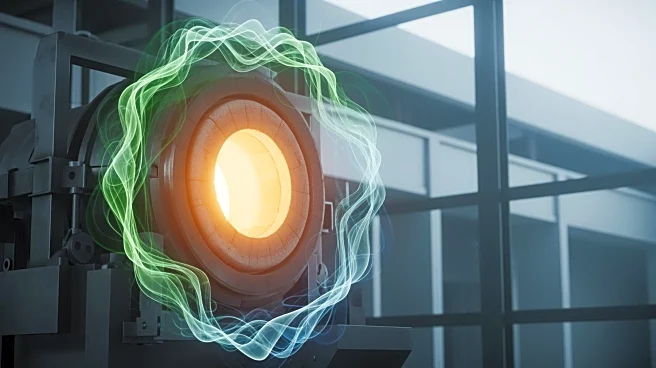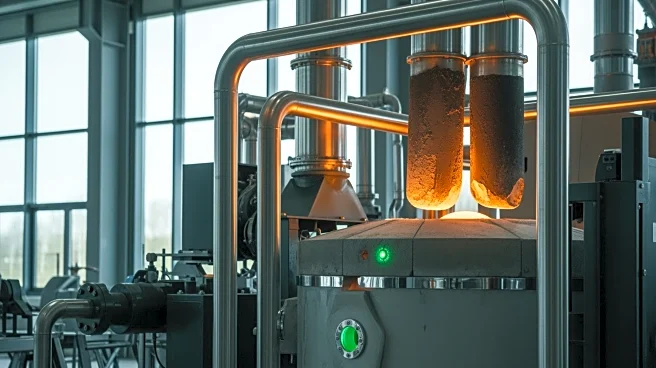What's Happening?
Rio Tinto has entered into a joint development agreement with Calix to fund the demonstration of the Zesty technology, which aims to produce hydrogen direct reduced iron or hot briquetted iron. The Zesty demonstration plant,
located in Kwinana, Western Australia, is designed to produce up to 30,000 tonnes per year from various iron ore sources. Rio Tinto will provide over $35 million in cash and in-kind support, including $8 million in cash payments before a final investment decision (FID), expected in 2026. The agreement includes supplying up to 10,000 tonnes of Pilbara iron ores for plant commissioning and operations, and facilitating introductions to potential users of the Zesty green iron product.
Why It's Important?
The partnership between Rio Tinto and Calix is significant as it addresses the need for low-emissions steel production, a critical industry responsible for 8% of global CO2 emissions. The Zesty technology offers a pathway to green iron and steel production by minimizing hydrogen consumption and utilizing flexible electric heating compatible with renewable energy sources. This collaboration could lead to substantial reductions in carbon emissions from steel manufacturing, aligning with global decarbonization goals and potentially transforming the industry by enabling the use of lower grade iron ores.
What's Next?
The next steps involve reaching a positive final investment decision by 2026, followed by the construction of the Zesty plant. Rio Tinto's support will be crucial in achieving these milestones, and the company will continue to explore ways Pilbara iron ores can contribute to low-emissions steel production. The successful implementation of Zesty technology could lead to broader adoption in the steel industry, encouraging other companies to invest in similar green technologies.
Beyond the Headlines
The development of the Zesty plant highlights the growing importance of sustainable practices in heavy industries. By reducing reliance on traditional iron ore processing methods, the technology could pave the way for more environmentally friendly production techniques. This shift may also influence regulatory policies and encourage further investment in green technologies, potentially leading to long-term changes in industry standards and practices.











